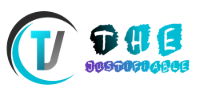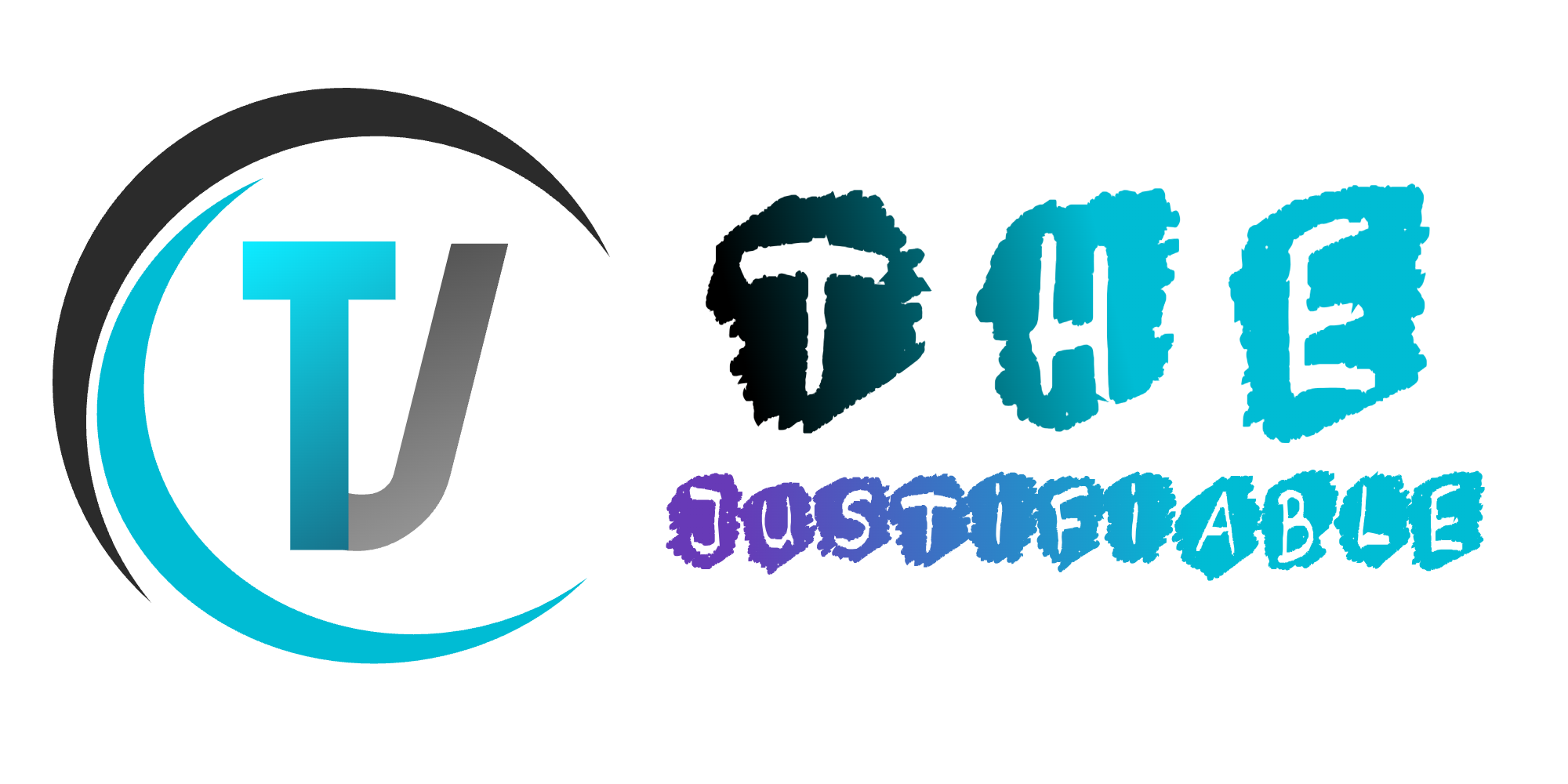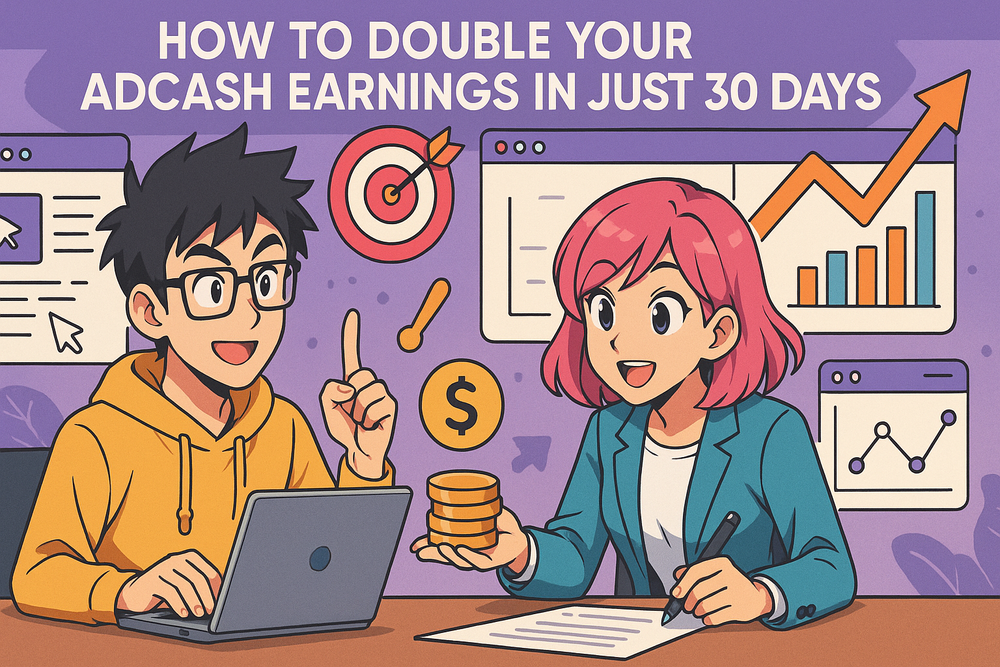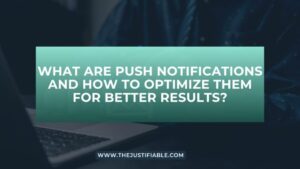Are your Adcash earnings stuck at the same level month after month? Wondering what you’re missing that could unlock a serious boost in revenue—fast? Or maybe you’ve tried optimizing your setup, but nothing seems to move the needle?
If you’ve ever asked yourself how to double your Adcash earnings without pouring in more hours or chasing sketchy tactics, you’re in the right place. In this guide, I’m going to walk you through real, proven strategies that can help you scale your results in just 30 days.
We’ll dig into everything from traffic targeting tweaks to ad format upgrades, and even how to spot hidden leaks in your current setup. You don’t need a massive budget or advanced tech skills—just a focused plan and some smart adjustments. Let’s get into it.
Uncover Hidden Revenue Leaks in Your Adcash Setup
Even a small oversight in your current setup can cost you more than you realize. This section focuses on identifying silent performance killers that might be holding your Adcash earnings back—and how to fix them without starting from scratch.
Audit Your Current Adcash Placements for Underperformance
Let’s start with a basic but often overlooked step—checking where your ads are actually showing up. Not all placements are created equal. Some drive solid engagement, others quietly drain your traffic and ad potential.
Here’s how to spot and clean that up:
- Use Adcash’s zone-level reports: These show how each ad placement is performing. Look for zones with a high number of impressions but a low click-through or conversion rate. That’s often a red flag.
- Check your heatmaps (tools like Hotjar or Microsoft Clarity work well): If users aren’t even reaching or noticing where your ads appear, it’s time to rethink those placements.
- Match ad types to user intent: For example, native ads tend to do better on content-heavy pages, while interstitials may perform better during transitions or exits. Test and validate what fits your flow.
- Look at bounce rates: If certain placements are causing users to leave immediately, they might be disrupting the experience too much.
A simple audit like this can uncover underperforming placements that silently cap your earnings potential. Remove or redesign them, and you’ll often see an instant lift—even before changing anything else.
Identify Low-Converting Traffic Sources and Redirect Budget
Not all traffic is worth paying for—especially if it doesn’t convert. You might be pouring money into sources that eat your budget but never deliver actual value. Here’s how to fix that without guessing.
- Check traffic source performance in your Adcash dashboard. Focus on metrics like eCPM, CTR, and conversion rates by source.
- Set up custom tracking to segment your data even deeper. Tools like Voluum or RedTrack can show you the journey from click to conversion and help you spot friction points.
- Compare device types and operating systems: Sometimes mobile traffic performs great from one GEO, but desktop traffic lags. Knowing this lets you reallocate budget to higher-performing segments.
- Pause or lower bids on poor-performing sources: Don’t feel bad about cutting what isn’t working. That money can be reinvested into proven winners.
What you’re doing here is not just eliminating waste—you’re improving your return on effort. Less noise, more focused traffic, better Adcash earnings.
Optimize Your Site Speed and Ad Load Times for Higher Engagement
You could have the best offers and perfectly targeted ads, but if your site is slow, it’s all wasted. A sluggish experience kills engagement before your ad even loads. Thankfully, speed is something you can fix without a developer army.
Start with this:
- Run a site speed audit using PageSpeed Insights or GTmetrix. These tools give you a clear snapshot of what’s dragging down your load times.
- Compress your images and use modern formats like WebP. This alone can shave seconds off.
- Use lazy loading for ads and content. This ensures that your ads don’t slow down the full page—especially on mobile devices.
- Minimize JavaScript and reduce third-party scripts. Too many tags, widgets, or plugins running at once will slow everything down.
- Choose a fast hosting service. If you’re using cheap shared hosting, upgrading can make a massive difference for just a few extra dollars a month.
The goal here isn’t just speed for speed’s sake—it’s speed that helps ads appear faster, get noticed, and engage more users. Every extra second it takes to load can mean lost clicks and lower Adcash earnings.
Use Strategic GEO Targeting to Maximize CPM Rates
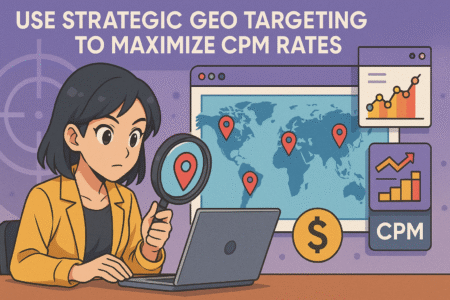
One of the fastest ways to improve your Adcash earnings is to focus on where your traffic is coming from. GEO targeting isn’t just about location—it’s about understanding which regions drive better CPMs, more conversions, and stronger user intent.
Focus on High-CPM Countries With Better Conversion Potential
Not every country delivers the same earning potential. CPM rates can vary drastically depending on demand, user behavior, and advertiser competition in different regions. If you’re not already prioritizing high-CPM countries, you’re likely leaving money on the table.
Here’s how to shift your focus:
- Start with Adcash’s reporting tools. Sort your traffic by GEO and check the eCPM (effective cost per thousand impressions) for each region. Pay attention to both volume and payout.
- Identify Tier 1 countries like the United States, United Kingdom, Canada, Australia, and Germany. These tend to attract higher bids from advertisers because of their stronger economies and online purchasing habits.
- Explore Tier 2 countries like Brazil, South Africa, or Eastern European regions. While they may not match Tier 1 payouts, they often bring lower traffic costs and solid conversion potential.
- Watch for advertiser demand shifts. Some regions see seasonal boosts in CPM due to local holidays, events, or product trends. Adjust your targeting accordingly.
The goal here isn’t to abandon lower-earning countries entirely, but to balance your traffic sources. Investing more in GEOs that convert better and pay higher CPMs will naturally increase your Adcash earnings without needing more visitors.
Segment Traffic by Device and Region for Precise Optimization
Broad targeting often means broad results—and that’s rarely a good thing. Segmenting your traffic by both device type and region gives you much clearer insight into what’s actually working, and where.
Here’s how to get more precise:
- Break down your traffic reports by desktop, mobile, and tablet. Adcash gives you the tools to view performance by device and GEO. You’ll often notice specific combos (like mobile traffic from Germany) perform significantly better than others.
- Identify where your CTR or conversions are highest. For example, mobile users in Southeast Asia might click more but convert less, while desktop users in Western Europe may convert at a higher rate.
- Adjust your bids or ad formats based on device. Mobile-friendly formats like interstitials and native ads often do better on phones, while pop-unders might work best on desktops.
- Exclude low-performing device-GEO combinations that consistently drain your budget. A few small exclusions can lead to cleaner data and better earnings overall.
Segmenting by both location and device helps you tailor your monetization strategy in a way that aligns with actual user behavior. This makes your campaigns leaner, sharper, and more profitable.
Test GEO-specific Landing Pages to Improve User Relevance
Relevance is everything when it comes to user engagement. Even if your traffic is coming from a high-CPM country, users are unlikely to engage with content that feels generic or out of touch. That’s where GEO-specific landing pages come in.
To improve user experience and increase conversions:
- Localize your landing pages. This doesn’t just mean translating the language—it means adjusting the visuals, currency, and cultural cues to match the region.
- Match offers to user expectations. A mobile app offer might do great in India but fall flat in France. Align the value proposition with what’s relevant to that market.
- Use dynamic landing pages that change based on the visitor’s IP. Platforms like Unbounce or Aweber allow for personalization at scale without manual duplication.
- A/B test different variations. Try running a control page versus a localized version and compare metrics like bounce rate, time on page, and click-through rate.
The more connected your users feel to the page content, the more likely they are to stick around, click, and convert. And those improved engagement metrics lead directly to stronger Adcash earnings.
Boost Engagement With High-Impact Ad Formats
The ad formats you use can make or break how users interact with your content—and how much you earn. Choosing the right format isn’t about copying trends; it’s about matching your audience’s behavior and expectations to maximize results.
Experiment With Pop-Under, Interstitial, and Native Ads
Each ad format on Adcash has its own strengths—and limitations. Finding the right mix can open up a noticeable lift in engagement and earnings.
- Pop-under ads open behind the main browser window and are less intrusive, making them ideal for passive monetization. They tend to deliver high impressions and can work well with a global audience.
- Interstitial ads show during natural pauses in user interaction, like page transitions or app opens. These are more aggressive but can generate strong CPMs when timed right.
- Native ads blend into the content and often perform better on blogs, news sites, or content-heavy pages. They’re more subtle and typically receive higher click-through rates because they match the look and feel of the site.
The key is to test each format in controlled campaigns and measure real user response. What performs well for one site or audience might fall flat elsewhere. Let the data guide you rather than assumptions.
Match Ad Format to User Intent and Page Type
There’s no one-size-fits-all when it comes to ad placement. If your ad format doesn’t align with how users are interacting with your content, engagement (and earnings) can take a hit.
Here’s how to think through the alignment:
- For blog content or informational pages, native ads feel less invasive and match the reader’s flow. Users browsing content are more likely to engage with recommendations that feel natural.
- On video or entertainment platforms, interstitials between clips or actions can make sense. Just don’t overdo it—timing and pacing are everything here.
- For download or utility pages, pop-unders often work best. These users are task-focused and more tolerant of a passive background ad, especially if it doesn’t interrupt their goal.
Understanding intent means stepping into your users’ shoes. Ask yourself, “What would feel annoying here?” and “What would I actually click on in this moment?” That mindset alone can improve your ad choices.
A/B Test Format Frequency to Balance Revenue and UX
Even the most effective format can backfire if it’s overused. A big part of making Adcash work long-term is managing how often your ads appear so they don’t exhaust or irritate your users.
To find the right frequency:
- A/B test how often each format appears—for example, show interstitials on every visit versus every third visit and compare engagement metrics.
- Track bounce rate and time on site. These indicators can reveal whether users feel overwhelmed or disrupted by your ad placements.
- Use session caps on ads like pop-unders to limit how often users see them within a certain time window.
- Gather feedback if possible, especially if you have a loyal user base. A simple feedback poll or contact form can reveal pain points you may have missed in the data.
The goal here isn’t just more clicks—it’s long-term trust and repeat visits. That only happens when users feel respected, not bombarded.
Leverage Smart Bidding for Better Campaign Performance

Smart bidding allows you to automate much of the optimization work, but only if you use it with intention. When set up right, smart bidding can help you win better traffic, reduce waste, and stretch your budget further.
Set Smart CPM (sCPM) to Let Adcash Optimize for Conversions
Smart CPM, or sCPM, is one of Adcash’s most powerful bidding features. It adjusts your bid in real-time to ensure you’re paying just enough to beat the competition, without overspending.
Here’s why it works so well:
- It’s reactive to auction dynamics, meaning you won’t overbid when there’s less competition, and you’ll stay competitive during peak traffic.
- You set the max you’re willing to pay, but the system bids lower when possible, saving budget.
- It optimizes toward performance, not just impressions—so over time, you’re bidding smarter for the traffic that actually converts.
To use it effectively, start with a mid-range max CPM and monitor your average payout over a few days. Adjust based on actual conversion trends, not just traffic volume.
Use Daily Budget Caps Strategically to Manage Pacing
Without proper pacing, you might burn through your budget in the morning and miss higher-converting evening traffic. That’s where daily budget caps come in handy.
Tips for better pacing:
- Set a modest daily budget when starting a campaign. This gives you room to test without blowing through funds on untested settings.
- Use Adcash’s “Even” budget pacing option to spread spend throughout the day. This helps avoid the common pitfall of running out of traffic too early.
- Monitor traffic peaks in your niche or GEO. For example, if users are more active at night in your top region, consider heavier bidding later in the day.
- Reassess every 3–5 days. Daily caps aren’t set-it-and-forget-it—they’re tools to guide your learning phase and maintain control.
It’s not about limiting yourself—it’s about being deliberate. Once you find what works, you can scale with confidence.
Monitor Real-Time Bid Performance and Adjust in Short Cycles
One of the biggest advantages of working with Adcash is the access to real-time data. If you’re not checking in daily—especially when testing—you’re likely missing key optimization windows.
Here’s how to stay agile:
- Check performance reports daily, focusing on click-through rate, eCPM, and conversions by placement and traffic source.
- Make micro-adjustments instead of sweeping changes. For example, tweak a bid by 5–10%, or change timing on a specific GEO.
- Watch for sudden changes in cost or performance. This could signal a change in competition or a shift in traffic quality.
- Use short test cycles—typically 3–7 days—to evaluate results before scaling. This gives you enough data to learn without committing too much budget too fast.
Being consistent with performance checks doesn’t mean micromanaging every hour. It just means staying tuned in enough to know when something’s working—or when something needs a pivot.
Scale Up With High-Converting Offers and Smart Rotations
Once your traffic setup is optimized, the next big lever to pull is the quality and relevance of your offers. What you promote—and how often you switch it up—plays a huge role in how much you can realistically earn with Adcash.
Align Offer Type With Audience Behavior and GEO Interests
It’s easy to throw up any offer and hope it converts. But to really scale your Adcash earnings, you need to align what you’re promoting with what your audience actually wants—and expects.
Here’s how to dial in the match:
- Research user behavior by region. For instance, utility app installs might do well in Southeast Asia, while dating or sweepstakes offers may perform better in Latin America or parts of Europe.
- Think mobile-first in mobile-dominant regions. If most of your traffic is on mobile, prioritize offers that load fast and are built for smaller screens.
- Avoid one-size-fits-all campaigns. Instead, break your campaigns into GEO-specific variations. What works in France won’t necessarily work in India or Argentina.
- Pay attention to vertical saturation. If a region is already flooded with casino offers, consider something adjacent, like finance or VPN services.
Matching audience intent with offer type doesn’t just help with clicks—it improves the whole user flow, from attention to conversion.
Use Rotation Tools to Prevent Ad Fatigue and Banner Blindness
Even a winning offer will stop performing if you keep showing it to the same users, the same way, over and over. This is where ad rotations can keep things fresh—and your revenue steady.
Tips to keep engagement high:
- Rotate creatives regularly. Even if the core offer stays the same, switch up the image, CTA, or format every few days or weekly, depending on traffic volume.
- Use platforms like AdsBridge, Binom, or CPA networks with rotation logic to automate creative changes based on performance or time of day.
- Set frequency caps so users don’t see the same offer too often. This small tweak can drastically reduce banner blindness.
- Track performance at the variation level, not just the overall campaign. This helps you spot which version is starting to dip in performance.
Keeping things fresh not only avoids audience fatigue—it also gives you ongoing insight into what messaging styles work best.
Split Test Between Direct Links, Landing Pages, and Prelanders
Sometimes, how you deliver the offer matters even more than the offer itself. Testing different user paths is a smart way to find the version that actually drives conversions.
Here’s how to approach it:
- Direct linking works best when the offer is simple and low-friction, like a single-click mobile install or an email submit.
- Landing pages add context and can help warm up users, especially for offers with more steps. They’re great for storytelling or building trust before the pitch.
- Prelanders serve as a teaser, bridging content with the offer. They work well in entertainment, adult, or viral content flows.
- Run A/B/C tests across these paths and compare not just conversion rates, but also bounce rates and time on page.
Don’t assume one format is always better. The winning setup can change depending on traffic type, device, or even the day of the week.
Implement Anti-Adblock Strategies to Regain Lost Impressions

Adblock usage is more common than ever, especially among mobile and desktop users in high-CPM regions. But with the right strategies, you can recover a chunk of that lost traffic and keep your campaigns performing strong.
Activate Adcash’s Built-In Anti-Adblock Solution
Adcash offers a native anti-adblock feature that can bypass many popular browser blockers. If you’re not using it, you’re likely losing a decent share of your traffic to invisible ads.
Here’s how to get started:
- Go into your campaign or zone settings and enable the anti-adblock option. It only takes a minute but makes a noticeable difference in reach.
- Track impressions before and after activation to gauge how much traffic is being recovered.
- Pair it with optimized formats, like native or pop-under, which are less likely to trigger aggressive blockers even before bypassing tech kicks in.
This one change won’t fix everything, but it’s a quick win to bring back users who would otherwise never see your ads.
Offer Incentives or Alternatives to Users With Adblock
Not every user will accept ads willingly—but many will engage with content or offers if you frame it the right way. Offering value in exchange for disabling Adblock is one route. Providing a cleaner experience or alternative path is another.
Here are some creative options:
- Ask users politely to whitelist your site, and explain how ads help you keep the content free.
- Offer a reward or exclusive content if they disable their blocker for a session or visit.
- Provide a “no-ads” experience in exchange for email sign-ups or app downloads, which still help you monetize.
- Test soft pop-ups that load only once per visit and offer choices, rather than demanding behavior changes.
It’s about working with your audience, not against them. A little respect and value exchange goes a long way.
Analyze Recovery Metrics to Fine-Tune Tactics
Once you’ve started working against Adblock, it’s important to track your progress and optimize your recovery strategy. This isn’t a one-and-done process—it’s iterative.
Key areas to monitor:
- Recovered impressions versus total blocked traffic. Tools like Adcash and third-party analytics can give you estimates of how much you’re getting back.
- Click-through rates on recovered ads. If users aren’t engaging even after bypassing the block, your creatives may need work.
- Compare session time for users with and without adblock. If the recovered experience feels too aggressive, users may bounce faster.
- Tweak based on region and device. Adblock rates vary by country and browser, so don’t treat your strategy as global.
The goal isn’t just showing the ad—it’s showing it in a way that still feels relevant and user-friendly.
Strengthen Tracking With Advanced Analytics Tools
The more clearly you understand how users interact with your content and ads, the easier it is to make profitable changes. Tracking tools give you the visibility you need to improve performance and scale your Adcash earnings with confidence.
Integrate Voluum or RedTrack for Deep Conversion Insights
Basic analytics only scratch the surface. If you want to truly understand what’s working, platforms like Voluum or RedTrack can help you dive deeper into user behavior, click data, and conversion paths.
Here’s why they’re worth using:
- Voluum gives you a full picture of every click, visit, and conversion. It helps you identify high-performing traffic segments by GEO, device, ad format, and more.
- RedTrack is great for multichannel tracking, especially if you’re running offers across several platforms. It syncs with Adcash and supports affiliate tracking with advanced rules.
- Both platforms support automation, like redirect rules and blacklists, helping you save time by cutting out underperforming sources without constant manual input.
- Real-time reports let you make decisions fast—like pausing low-ROI campaigns or boosting your best zones without delay.
Setting up one of these tools may take an hour or two, but once it’s running, you’ll gain insights that basic ad tracking just can’t deliver.
Track Click Paths to Spot Drop-Off Points in Funnels
If users are clicking but not converting, something is breaking down in your funnel. Tracking click paths can show you exactly where that happens so you can fix it without guessing.
Here’s how to approach it:
- Use tools like Clarity or Hotjar to visually map user journeys and session recordings. You’ll see exactly where users pause, scroll past, or drop off entirely.
- Monitor each step of your funnel separately—from ad click to landing page view, to prelander interaction, to conversion. Drop-offs in any of these steps highlight friction.
- Check load times for each part of the funnel, especially on mobile. If your landing page takes more than three seconds to load, many users won’t wait around.
- Test different funnel paths to see which ones guide users more smoothly toward the goal.
When you can pinpoint where users disengage, you’re not just fixing problems—you’re opening the door to more consistent, scalable revenue.
Use Custom Tracking Parameters for Better Attribution
Understanding which exact clicks drive your conversions can help you double down on what works. Custom tracking parameters make this possible by tagging each traffic source, campaign, and ad variation uniquely.
Tips to set it up effectively:
- Use UTM parameters or custom tokens like {zoneid}, {campaignid}, and {device} in your Adcash URLs. These values populate automatically and tie back to real data.
- Segment performance by creative, landing page, and GEO. Over time, you’ll start to see patterns—certain images convert better in specific countries or on specific devices.
- Analyze beyond surface metrics. CTR is nice, but if those clicks aren’t leading to conversions, dig deeper into the attribution chain.
- Use your tracker’s reporting features to build clear reports for each funnel stage, from first click to final action.
When your data is this clear, it becomes much easier to scale with confidence and avoid wasting money on low-performing angles.
Build Better Funnels That Warm Up Traffic Before Monetization
Cold traffic doesn’t always convert right away—and that’s okay. Sometimes, adding a bit of warmth, trust, or value before pitching an offer can lead to far higher earnings in the long run.
Use Educational or Entertaining Content to Build Trust First
Before asking users to click an ad or fill out a form, it helps to offer something of value. Educational and entertaining content can create interest, lower resistance, and make users more open to your message.
You can try things like:
- Short blog posts or videos that explain a benefit related to your offer. For example, if you’re promoting a VPN, a quick article on internet safety builds natural interest.
- Quizzes or interactive content to engage users before showing the offer. These work well in health, finance, and lifestyle niches.
- Trending or local news angles, especially for native campaigns. Content that’s timely and relevant grabs attention and builds credibility.
- Story-based prelanders, especially when tied to emotional or practical needs. These humanize the offer and increase engagement.
Warming up your traffic this way takes a bit more effort, but it can massively improve the quality of clicks and conversions you get.
Add Soft Calls-to-Action to Nurture the Click Path
Pushing users too fast toward a sale or conversion can turn them off. Instead, soft calls-to-action gently guide them along the path until they’re ready to act.
Here’s how to do it well:
- Use suggestive language like “Learn more,” “See how it works,” or “Check it out” instead of hard sells like “Buy now.”
- Place CTAs in natural positions, such as after a useful tip, near the end of an article, or within a video script. This feels like a helpful next step, not a sales push.
- Test subtle color and button designs. Sometimes, loud CTA buttons are less effective than clean, context-matching ones that blend with the page.
- Layer in curiosity. A good soft CTA makes users want to click to satisfy a question or emotion you’ve just stirred.
This kind of nurturing CTA keeps users engaged without feeling pressured—creating a much smoother transition into monetization.
Delay Monetization Slightly to Increase Overall Conversions
This might sound counterintuitive, but delaying monetization can often lead to better results. When users don’t feel rushed, they’re more likely to trust you—and that trust leads to action.
Here’s what it could look like:
- Give users 10–15 seconds of content before introducing the ad. This builds engagement and reduces bounce rate.
- Use time-based triggers to reveal pop-unders or interstitials only after a user has stayed on a page or scrolled to a certain point.
- Add one or two steps between content and offer, like a value-building article or quiz. These delay the pitch, but make it more impactful.
- Run A/B tests to compare immediate monetization vs. delayed funnels. You may find that even a short delay improves quality and overall conversions.
Sometimes, letting users breathe just a little before asking for action is what makes the difference between a bounce and a conversion.
Automate Campaign Optimization With Adcash Rules
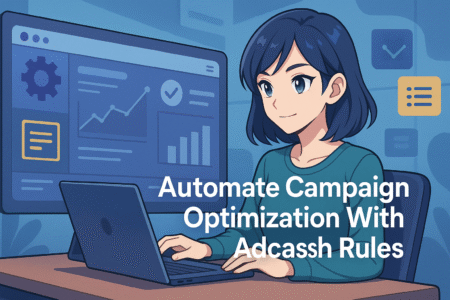
Manual campaign management can get overwhelming—especially when you’re working with multiple zones, offers, and GEOs. Adcash offers built-in rules to automate key actions, helping you save time while still improving performance.
Set Performance-Based Rules to Kill Underperforming Zones
Some zones just won’t deliver, no matter how much traffic they push. Instead of monitoring manually, you can create automatic rules that pause or exclude low performers based on specific criteria.
Here’s how to do it:
- Set thresholds based on your goals. For example, if a zone spends over $5 and doesn’t convert, set a rule to pause it.
- Use CTR, eCPM, or conversion rate as your baseline. Choose metrics that reflect value, not just volume.
- Avoid emotional decisions by trusting the rules. It’s easy to feel like a zone just needs more time, but automation helps you stick to what the data says.
- Review your rules every few days, especially during testing phases. Fine-tuning your limits ensures your automation stays aligned with evolving campaign trends.
This approach helps trim the fat from your campaigns, keeping them lean, efficient, and focused on results.
Create Auto-Scaling Rules Based on Click-Through or Conversion Rate
When something is working, you want to double down—but doing that manually can be a time suck. Auto-scaling rules help you increase spend on high performers while you focus on strategy.
To set this up effectively:
- Use rules that increase your bid or budget when a zone exceeds a set CTR or conversion rate. For example, if a zone hits a 2% CTR and has at least 3 conversions, automatically raise your bid by 10%.
- Scale gradually. You don’t want to overwhelm your budget or flood your traffic source with clicks you can’t afford. Keep increases in small increments.
- Set safety caps to avoid overspending. Even with automation, it’s smart to have a max budget or bid ceiling for each rule.
- Apply rules to specific campaigns only, especially when testing new offers or GEOs. This keeps your control tight and avoids surprises.
This method ensures you’re not just cutting what doesn’t work—you’re growing what does, without having to babysit your dashboard all day.
Schedule Rules to Trigger at Peak Traffic Hours
Traffic volume and quality fluctuate throughout the day. Some hours are packed with high-converting users, while others drain your budget with lower intent. Using scheduling rules helps you stay active only when it makes sense.
Here’s how to make it work:
- Use Adcash insights or tracker data to identify peak hours for your best-performing GEOs.
- Set rules to increase bids or unpause campaigns during those hours, then reduce bids or pause when traffic quality dips.
- Create weekday vs weekend variations, especially if your vertical performs differently based on the day.
- Combine time scheduling with performance metrics, so your rules don’t just fire on a clock—they fire based on real opportunity.
It’s a simple shift, but it can make a big difference in campaign efficiency and overall earnings.
Multiply Revenue Streams With Strategic Cross-Monetization
Relying solely on one monetization source can limit your growth. Adding complementary strategies helps you get more out of each visitor—especially when certain impressions or clicks don’t pay off right away.
Add Complementary Networks Like PropellerAds or PopAds
Sometimes, Adcash won’t monetize every bit of your traffic as efficiently as possible—especially in regions where advertiser demand fluctuates. That’s where adding other networks can help.
Here’s how to approach it:
- Use PropellerAds for push notifications, popunders, and native ads, especially when you want to monetize Tier 2 or Tier 3 traffic. They offer smart optimization and decent fill rates in a wide range of GEOs.
- Try PopAds for high-volume, low-CPC monetization. It’s particularly strong in under-monetized countries where CPMs might be lower but volume is high.
- Don’t stack networks aggressively. Choose one or two that complement Adcash without overwhelming your site or slowing it down.
- Split test performance by routing a portion of your traffic to each platform and comparing total earnings.
When done right, cross-network setups allow you to catch revenue that would otherwise slip through the cracks.
Use Backfill Techniques for Unsold Ad Inventory
No platform fills 100% of impressions all the time. Backfilling lets you monetize the impressions Adcash doesn’t sell by passing them along to a secondary provider.
Here’s how to make that happen:
- Set up your ad code in a waterfall—if Adcash can’t fill the request, your secondary network takes over.
- Use fast-loading scripts so the transition is seamless and doesn’t impact user experience.
- Prioritize Adcash’s better-performing GEOs, and route less profitable regions to your backup network.
- Track your backfill performance separately, so you know what’s working and where the gaps still exist.
This layered approach ensures you don’t leave any traffic unmonetized—even if it doesn’t perform on your main platform.
Promote Affiliate Offers in Tandem With Adcash Campaigns
Combining affiliate marketing with Adcash ads is a smart way to diversify your revenue without needing more traffic. You’re simply offering users multiple paths to convert.
Some ideas to try:
- Place affiliate offers on your thank-you pages, or use pop-ups after a user engages with an Adcash ad.
- Use native ads or banner space for affiliate offers in content-heavy sites, blending them with editorial content.
- Promote high-payout offers related to your main vertical. For example, if you’re monetizing with sweepstakes, an email submit offer or mobile app can make a great companion.
- Rotate offers based on GEO using a tracker or smart rotator tool, ensuring users only see what’s relevant to them.
This dual-monetization setup works especially well if you’re getting good engagement but want to push your earnings higher without adding complexity.
Accelerate Growth With Proven Traffic Sources That Scale
When you’ve nailed your setup, offers, and tracking, the next step is scaling. But not all traffic sources grow equally. Choosing scalable sources that maintain quality is key to boosting your Adcash earnings consistently.
Invest in Push Notifications, Direct Buy, and Native Networks
If you want to scale traffic without sacrificing engagement, it helps to work with formats and platforms that deliver consistent user intent. Push, direct buys, and native are strong contenders.
Here’s how each one plays a role:
- Push notifications are user-permission-based ads that show directly on a device or browser. They tend to be high-volume, low-cost, and surprisingly engaging—especially for time-sensitive or curiosity-driven offers.
- Direct media buys let you purchase traffic from specific sites or zones that already perform well. It’s more work upfront, but gives you better control over quality and long-term profitability.
- Native ad networks like MGID, Taboola, or Outbrain blend ads with editorial content and work well for prelander or story-based funnels. These networks scale easily and can be GEO-targeted to match your highest-performing regions.
The idea here is to expand with intention. Choose sources that align with your best-performing offers, then gradually increase volume while tracking performance.
Use Traffic Source Filters in Adcash for Better Matching
Within Adcash, you don’t need to treat all traffic equally. Their filters allow you to fine-tune who sees your ads based on behavior, device, browser, and other targeting layers.
To make the most of it:
- Filter by operating system if your offer only supports Android, iOS, or desktop users. This keeps clicks relevant and conversion rates higher.
- Use frequency capping to control how often the same user sees your ad. This reduces fatigue and avoids wasted impressions.
- Layer in zone or publisher filters to stick with placements that have already shown strong results in your tracker.
- Exclude specific sources that have high bounce rates or low conversion, especially during scale-up.
Better targeting means you’ll pay for fewer low-quality clicks and spend more on users who are actually ready to engage.
Scale Winning Campaigns in Parallel With Retargeting
Scaling isn’t just about new traffic—it’s also about getting more out of the users who’ve already visited but didn’t convert. Retargeting helps you bring those users back when they’re more likely to take action.
Here’s how to do it well:
- Use Adcash’s retargeting features to create audience segments of users who clicked but didn’t convert. Show them a new variation of your offer or a softer CTA.
- Segment your retargeting by behavior, like time on site or number of interactions. This allows you to spend more on users who showed strong interest.
- Combine retargeting with email or push sequences for deeper engagement. Sometimes, a second or third touchpoint is what drives the final conversion.
- Set frequency and recency caps so you’re not annoying users who already said no. A gentle nudge works better than a constant reminder.
Parallel scaling keeps your acquisition costs more stable and gives you a second chance at revenue you might otherwise miss.
Monitor, Adapt, and Repeat With Weekly Performance Reviews

No strategy, no matter how well built, will succeed without regular check-ins. Consistent performance reviews help you catch issues early, double down on winners, and make smarter decisions about your next move.
Set Up Weekly Checkpoints With Clear ROI Benchmarks
It’s easy to fall into the habit of checking metrics randomly, but a scheduled weekly review gives your campaigns structure and clarity.
Here’s how to do it right:
- Pick a consistent day and time each week to review your campaigns. This creates a rhythm and helps you spot patterns faster.
- Track key ROI benchmarks like cost per conversion, CTR, eCPM, and return on ad spend (ROAS).
- Compare this week to the last three. A single spike or dip doesn’t mean much on its own, but patterns tell you where you’re headed.
- Use visual dashboards in tools like RedTrack, Voluum, or even a simple spreadsheet to summarize your top-performing campaigns and flag weak ones.
This habit keeps you grounded in your numbers—so you’re adjusting based on results, not instincts.
Log Every Change to See What’s Working Over Time
Without a change log, it’s nearly impossible to know why a campaign suddenly improved—or fell apart. Even small tweaks can have big effects, and tracking them helps you learn faster.
Here’s what to log:
- Every change to bids, targeting, creatives, or offers. Even if it feels minor at the time.
- Date and reason for the change. Did you adjust based on a test result, a budget limit, or feedback from your network?
- The outcome after 3–7 days. This gives enough time to see if the change helped or hurt performance.
Use Google Sheets, Notion, or even a shared doc to keep track. The goal isn’t to create extra work—it’s to avoid repeating past mistakes and recognize what actually works.
Use Heatmaps and Session Recordings to Understand User Behavior
Metrics can tell you what is happening, but they don’t always explain why. That’s where behavioral data like heatmaps and session recordings can help.
Why they’re useful:
- Heatmaps show where users click, scroll, and pause, helping you understand what content draws attention—and what gets ignored.
- Session recordings let you watch real user interactions. You’ll spot confusion, hesitation, and drop-off points that numbers alone won’t reveal.
- Use this insight to improve funnel flow—like adjusting CTA placement, trimming long text, or changing confusing button labels.
- Tools like Hotjar, Clarity, or Smartlook are simple to install and give you a clear view of how users experience your pages.
When you pair this data with your performance metrics, you get a full picture of both the numbers and the narrative behind them.
Make Your Next 30 Days Count—Start Doubling Your Adcash Earnings
You don’t need a massive budget or complex tech to grow your ad revenue. You just need a clear strategy, consistent action, and the patience to optimize as you go. The next 30 days can transform your results if you stay focused on the right steps.
Commit to Daily Testing and Optimization Cycles
Consistency beats intensity in performance marketing. If you really want to double your Adcash earnings, showing up every day—even for just 30 minutes—can make a big difference over time.
Here’s how to keep it manageable:
- Test one element at a time—ad format, offer, landing page, or GEO. That way, you can clearly see what’s driving results.
- Set a simple routine each morning or evening to check stats, make one adjustment, and log your findings.
- Rotate creatives weekly to fight ad fatigue and keep users engaged, especially in high-volume traffic zones.
- Use small-scale tests before rolling out big changes. You don’t need to overhaul your setup daily—just nudge it in the right direction.
Think of this as stacking tiny wins. Day by day, you’re learning what works for your audience and eliminating the stuff that doesn’t convert.
Focus on Scalable Tactics That Deliver Compound Growth
Not every tactic will move the needle long term. That’s why it helps to prioritize strategies that grow over time rather than spike once and fizzle out.
Scalable growth looks like this:
- Dialing in your top-performing GEOs, then adding similar regions with comparable behavior.
- Building retargeting lists that grow each week, giving you a larger and more qualified audience to re-engage.
- Optimizing your funnel, so even if traffic stays the same, conversions improve steadily.
- Layering in cross-monetization, turning a single traffic source into multiple revenue streams without more effort.
These strategies build on themselves. So even if results feel small at first, they can snowball into big wins within just a few weeks.
Set Clear Weekly Milestones to Stay on Track and Motivated
A 30-day plan works best when it’s broken into manageable checkpoints. This gives you something to aim for—and celebrate—as you build momentum.
Try setting milestones like:
- Week 1: Complete a full audit of your Adcash zones, optimize your top pages for speed, and update tracking.
- Week 2: Launch 2–3 new GEO-targeted campaigns using high-CPM countries and fresh creatives.
- Week 3: Add a second monetization layer (like affiliate offers or a backup network) and begin retargeting.
- Week 4: Optimize your top performers with automated rules, scale traffic sources that show results, and run final A/B tests.
These goals don’t need to be perfect—they just need to be specific enough to track and flexible enough to adjust. That structure can be a huge motivator, especially if you’re juggling other work.
